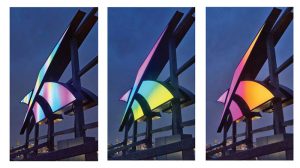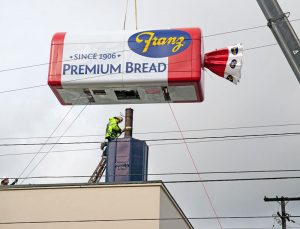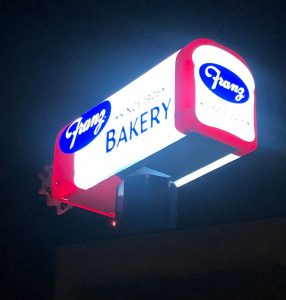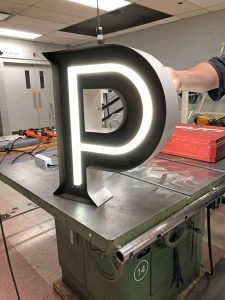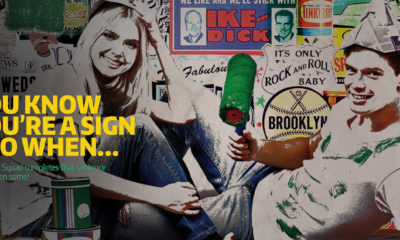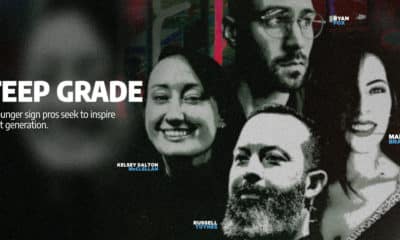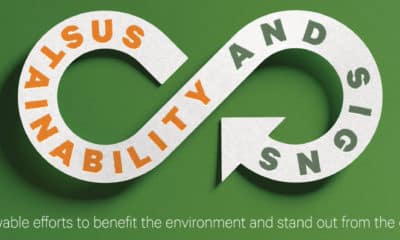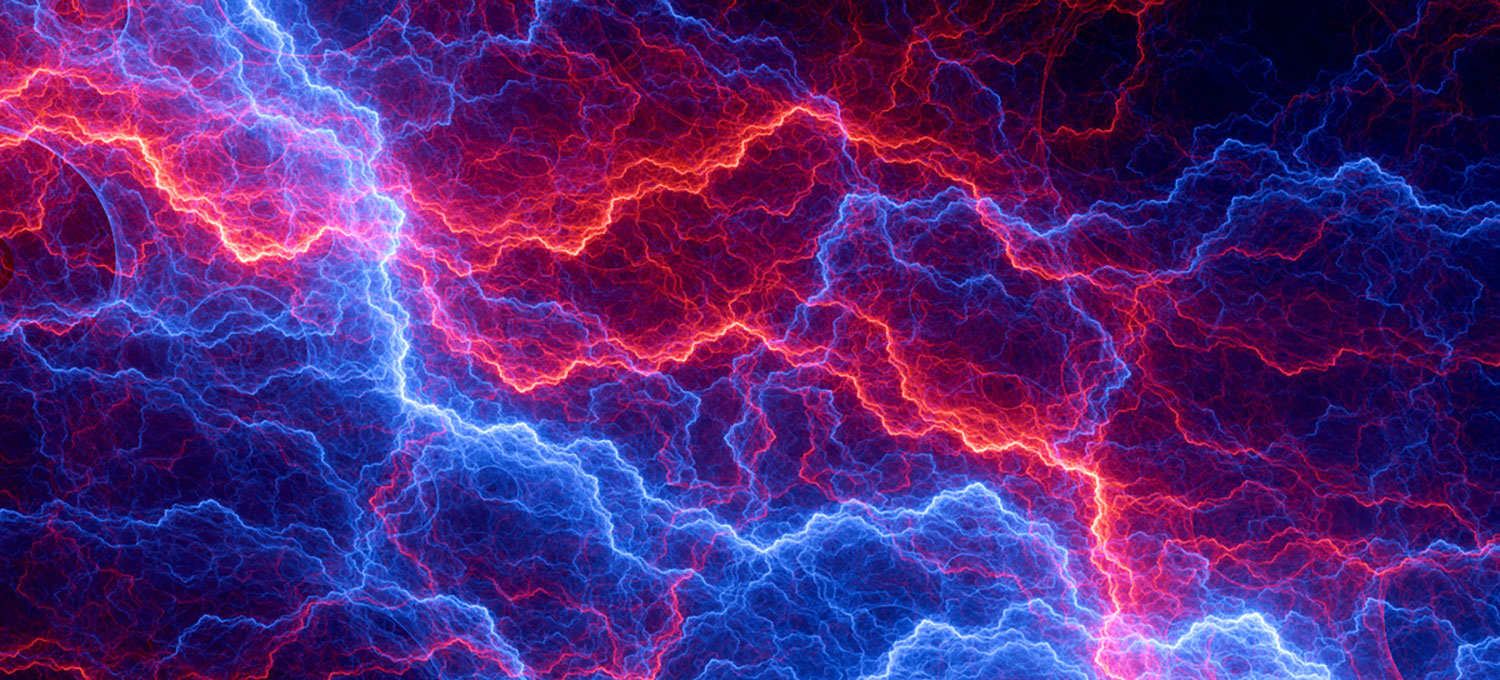
Changes in a Flash
Three companies consider electric-sign trends of the immediate past, present and future.
Published
4 years agoon
ELECTRIC SIGNS ARE becoming more customized, more of an architectural element and customers are demanding faster turnaround times, according to the officials of three sign companies we interviewed: Richard Poyant, president, and Stephanie Poyant Moran, director of sales operations, Poyant (New Bedford, MA); Kevin Keljo, owner, and Darci Keljo, community manager, Security Signs (Portland, OR); and Jeanne Mandeville, vice president, Mandeville Sign (Lincoln, RI) – hereafter, abbreviated to each’s company name.
TRENDS OF THE PAST 3-5 YEARS
It’s readily apparent that LEDs have continued to replace neon, fluorescent and incandescent lighting options for electric signs. Our latest State of the Industry survey found that 85% of sign companies use LEDs as the lighting source for their electric signs. Advancements in LEDs’ longevity, smaller sizes, multiple power options, operational savings and, of course, programmability have equated to widespread use. “Color-changing, dynamic, programmable LED lighting has had a big impact and a higher level of interest to deliver a landmark sign for a brand,” Poyant said.
Beyond those, increased architectural applications and designs that take the structures behind the signs into account are on the rise, as well. “The influence of architects and designers outside the sign industry has driven some unique and innovative techniques to achieve the expected function and result,” Security Signs said. LED lighting systems have also enabled Poyant to offer new lighting enhancements, including architectural elements, as well as signage, and Mandeville Sign has noted an increase in landlords requiring trim-less letters.
However, permitting electric signs has become more challenging for companies in certain locations, with continued tightening of jurisdictional controls, according to both Security Signs and Mandeville. “[The] review process has also been slower and requires more information in order to obtain sign permits,” Security Signs said. “Increased rigidity in code interpretation has also made the process more difficult to navigate.” Mandeville Sign has encountered greater uses of “Unified Plan Development” at the municipality plan review level to define sign design details, with an increased need for structural engineering design and stamped drawings. Fortunately, both Security Signs and Mandeville also report more municipalities moving to online permitting platforms, which is streamlining the submittal process.
Otherwise, all three companies we spoke to reported an increase of complexity to recent electric sign projects. “We have noticed an increased demand and interest in cutting-edge design incorporating a variety of materials, finishes and textures that have not been common in our industry,” Poyant said. As a result, the company developed faux patina and wood grain paint finishes that are far more durable and less costly than digital prints.
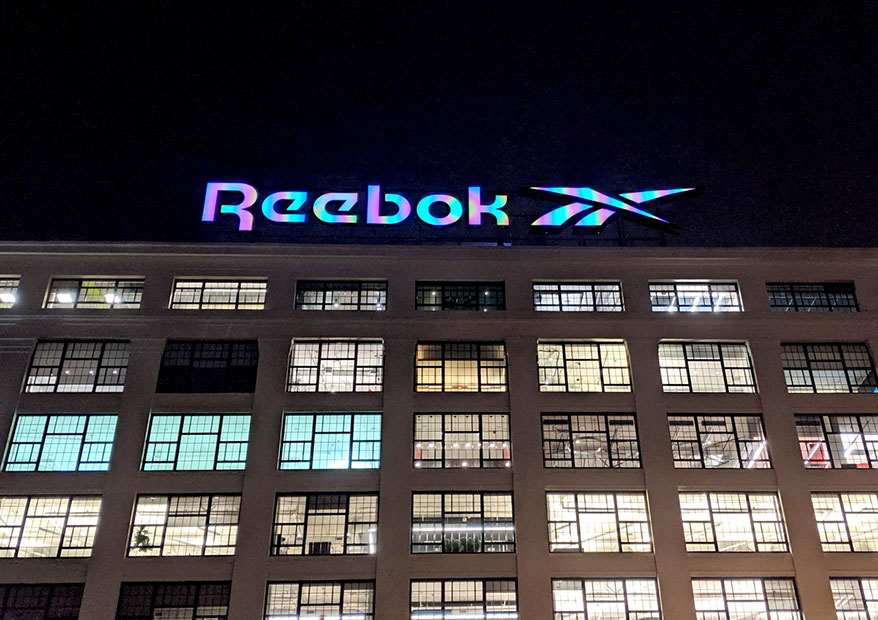
Poyant (New Bedford, MA) recently replaced the old logo for Reebok with a new 12-ft.-tall, programmable-LED channel letter set on the rooftop of their corporate headquarters in Boston’s Seaport District.
AdvertisementCUSTOMER DEMANDS
Not surprisingly, clients have been requesting faster turnarounds. “Customers are [becoming accustomed] to quick delivery of products online and are having the same expectation with custom electric signs,” Security Signs said. At the same time, Mandeville Sign has found that “customers have less knowledge about the sign type they would like to see on their project and rely more on the sign company to design from a blank page.” This has led to more customers wanting to see more prototypes and samples of materials to be used, quality photos of examples that meet their certain project needs and 3D drawings of their sign projects, according to Security Signs.
Poyant has noticed a “reawakening” on the part of Boston-area planning and zoning officials in considering and enabling larger branding opportunities as a way to drive new development and re-development of underutilized areas. “Companies like Converse, Boston Consulting Group and Reebok have been able to incorporate [color-changing, dynamic-signage] technology into large renditions of their logos,” Poyant said. Security Signs reported customers seeking a “small form factor” – thinner cabinets and letters that maintain clean lighting and high legibility.
To add to the list of contemporary client demands, Mandeville Sign observed that the sign design process is still often the last to be addressed in a construction project and starts much later than needed to meet production and installation timelines. Security Signs corroborated that finding, adding that electric sign projects are regularly developed while sites are being built.
On a smaller scale, Poyant stated that “the clean lines of trim-less channel letter construction appeal to retail, university, healthcare and corporate markets for a clean, upscale look that is viewed close-up in both interior and exterior environments.” In addition, Poyant often incorporates dual-color vinyl technology that allows a daytime color for maximum contrast and readability, which can be backlit with stationary LEDs or color-changing LEDs for a completely different nighttime impact.
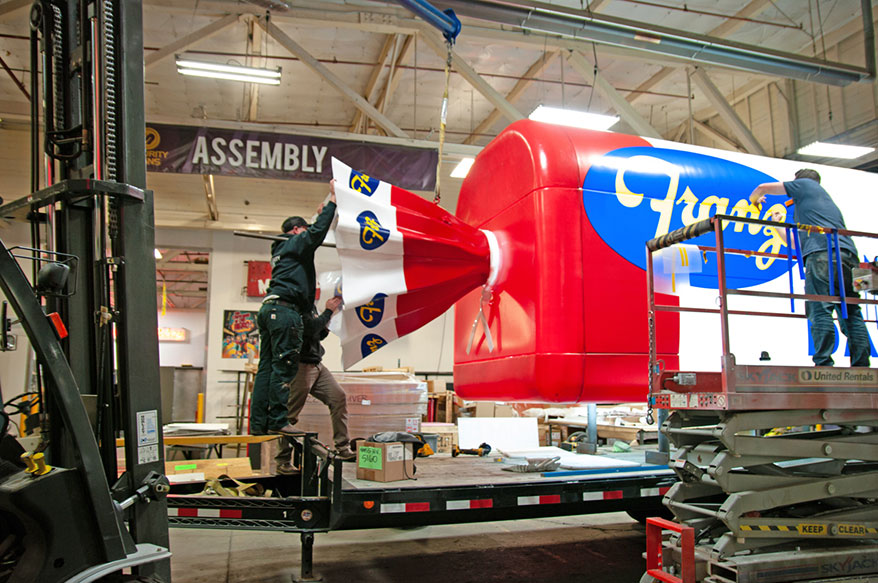
Security Signs (Portland, OR) removed and fully restored their hometown’s iconic, revolving Franz Bakery bread loaf sign in March, its first facelift after almost 40 years. The display measures 8 x 25 ft. and the restoration included a full LED retrofit, new acrylic skin and graphics.
LEADING MANUFACTURERS AND PRODUCTS
Trim-less channel letters have already been mentioned. Mandeville Sign also stated that LEDs procured from many sources are essential to custom electric signs. Security Signs mentioned cabinet LEDs, retrofit LED systems and programmable LED options as products that help achieve creative lighting solutions and small form factors.
AdvertisementPoyant has chosen products from several color-changing LED companies, but, “We have worked most closely with Bitro,” they said. “On our latest project, they provided terrific, on-site technology and programming support.” Poyant relies on 3M perforated vinyl as its preferred dual-color film. “And Miratec is our go-to for high-end, translucent digital printing, especially when the customer wants the same PMS color for day and nighttime viewing.” Steel Art has also been a long-time partner for Poyant when it comes to “creative, high-quality finishes and unique lighting for channel letters and logos, especially when the tolerances are tight and the configuration is small in size.”
Security Signs applauded the “variety of subscription-based CRM and project-management software systems that are easier to implement and evolve, versus products that require a large upfront investment and implementation,” adding that “we have been using Smartsheet for project tracking through sales and delivery cycles.”
ANTICIPATING THE NEXT THREE YEARS
Today, a broader, more diverse range of clients means emphasis on creativity is more important than ever. “Developing new methods and ideas to building electric displays,” are in the offing, as are thinner components. Mandeville Sign anticipates more signs with trim-less letters, stencil-cut aluminum faces recessed with push-through acrylic, internally illuminated fronts and halo-lit designs. Poyant foresees greater demand for more color, brighter, interesting and open spaces. “People will connect with brands that they feel they can trust and that best meet their ever-changing needs,” Poyant said. “Those needs are hard to predict. Whatever they are, our industry will find the way to best meet them.”
Faster fulfilment times once designs and permits are approved lie just over the horizon, according to Security Signs, as well an increased emphasis on information updates. “Providing customers with project status, installation dates and visibility into their projects,” will be more common, they predicted.
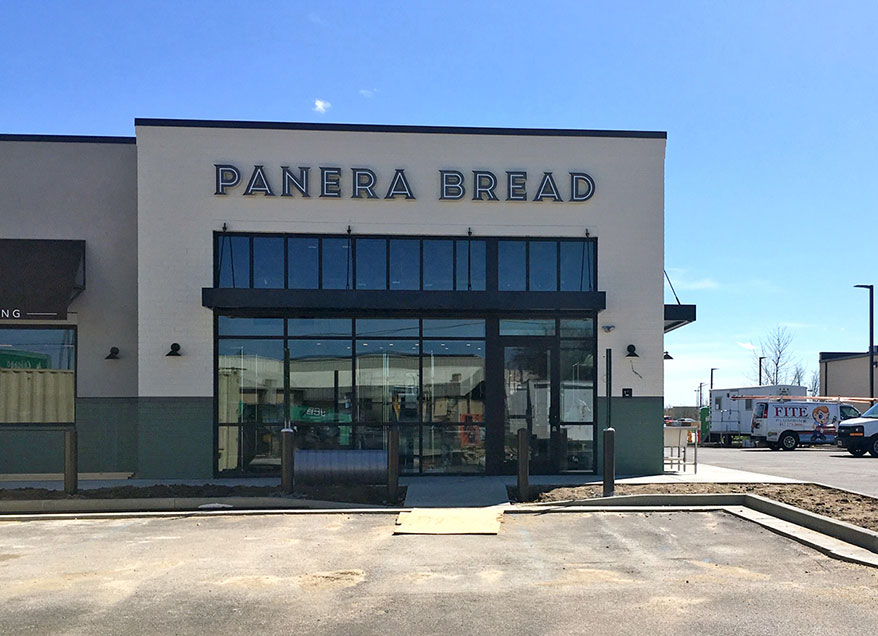
The channel letter sign that Mandeville Sign (Lincoln, RI) created for this Panera Bread location features .125-in. aluminum faces with stencil-cut push-though clear acrylic, 4-in.-deep returns, clear Lexan backs and a white vinyl diffuser. The letters are pin-mounted 1 in. from the wall surface and produce both front and backlit effects.
COVID-19 CHANGES EXPECTED
Of course, the COVID-19 pandemic has altered the changes expected, especially within the next several months to a year or more. “A lot will now depend on the confidence level of business leaders throughout the country as we move out of the ‘lock-down,’” Poyant said. “What will be the short- and long-term effects on the hospitality industry, brick-and-mortar retail, shopping centers, restaurants, casinos, hotels, healthcare and education? Will the trend of creating attractive, new work environments surrounded by amenities like gyms, coffee shops, restaurants, etc., continue?” they wondered.
AdvertisementSecurity Signs feels that our entire culture may change, with a “larger number of people working from home and separated from peers. Exploring new ways to keep teams connected and engaged during these challenging times” will provide sign companies with new obstacles to overcome. An obvious need to highlight safety and health will be paramount, especially at signshops themselves. “More protocol and procedures to maintain healthy operations and awareness at our facility and customer’s premise,” are on Security Signs’ docket.
Mandeville Sign is concerned that in the near-term they could see severe budget constraints from customers, and “maybe less focus on the wow factor of the sign and more on the price/budget.” They worry that there could be “huge pricing pressure coming, as too many sign companies compete for too few projects.”
But aside from the omnipresent pandemic concerns, Mandeville offered one last observation by way of Michael Rogers, the “Practical Futurist,” who addressed the annual World Sign Association meeting 18 months ago. He spoke of consumer need for experience to drive satisfaction and envisioned AI experiences integrated with message-center signage. “Imagine a feedback loop as you pass by a wall of screens and a puppy appears to walk with you and interact,” Mandeville recalled. “I have not seen anything close to that as a product, but we are seeing the use of indoor-linked LED screens gaining a foothold in the market.”
So, be on the lookout for that AI puppy and more, as electric signs continue to evolve into a suddenly less certain future.
PHOTO GALLERY ( 4 IMAGES)
Mark Kissling is Signs of the Times’ Editor-in-Chief. Contact him at mark.kissling@smartworkmedia.com.

SPONSORED VIDEO
Introducing the Sign Industry Podcast
The Sign Industry Podcast is a platform for every sign person out there — from the old-timers who bent neon and hand-lettered boats to those venturing into new technologies — we want to get their stories out for everyone to hear. Come join us and listen to stories, learn tricks or techniques, and get insights of what’s to come. We are the world’s second oldest profession. The folks who started the world’s oldest profession needed a sign.
You may like
Advertisement

NUtec Digital Ink Invests in Solar Energy for Facility

5 Reasons to Sell a Sign Company Plus 6 Options

21 Larry Albright Plasma Globes, Crackle Tubes and More
Subscribe

Bulletins
Get the most important news and business ideas from Signs of the Times magazine's news bulletin.
Advertisement
Most Popular
-

 Tip Sheet1 week ago
Tip Sheet1 week agoAlways Brand Yourself and Wear Fewer Hats — Two of April’s Sign Tips
-

 Photo Gallery3 days ago
Photo Gallery3 days ago30 Snapshots of the 2024 ISA Sign Expo
-

 Ask Signs of the Times5 days ago
Ask Signs of the Times5 days agoWhy Are Signs from Canva so Overloaded and Similar?
-

 Real Deal2 weeks ago
Real Deal2 weeks agoA Woman Sign Company Owner Confronts a Sexist Wholesaler
-

 Benchmarks1 week ago
Benchmarks1 week ago6 Sports Venue Signs Deserving a Standing Ovation
-

 Paula Fargo13 hours ago
Paula Fargo13 hours ago5 Reasons to Sell a Sign Company Plus 6 Options
-

 Photo Gallery13 hours ago
Photo Gallery13 hours ago21 Larry Albright Plasma Globes, Crackle Tubes and More
-

 Women in Signs2 weeks ago
Women in Signs2 weeks ago2024 Women in Signs: Megan Bradley
